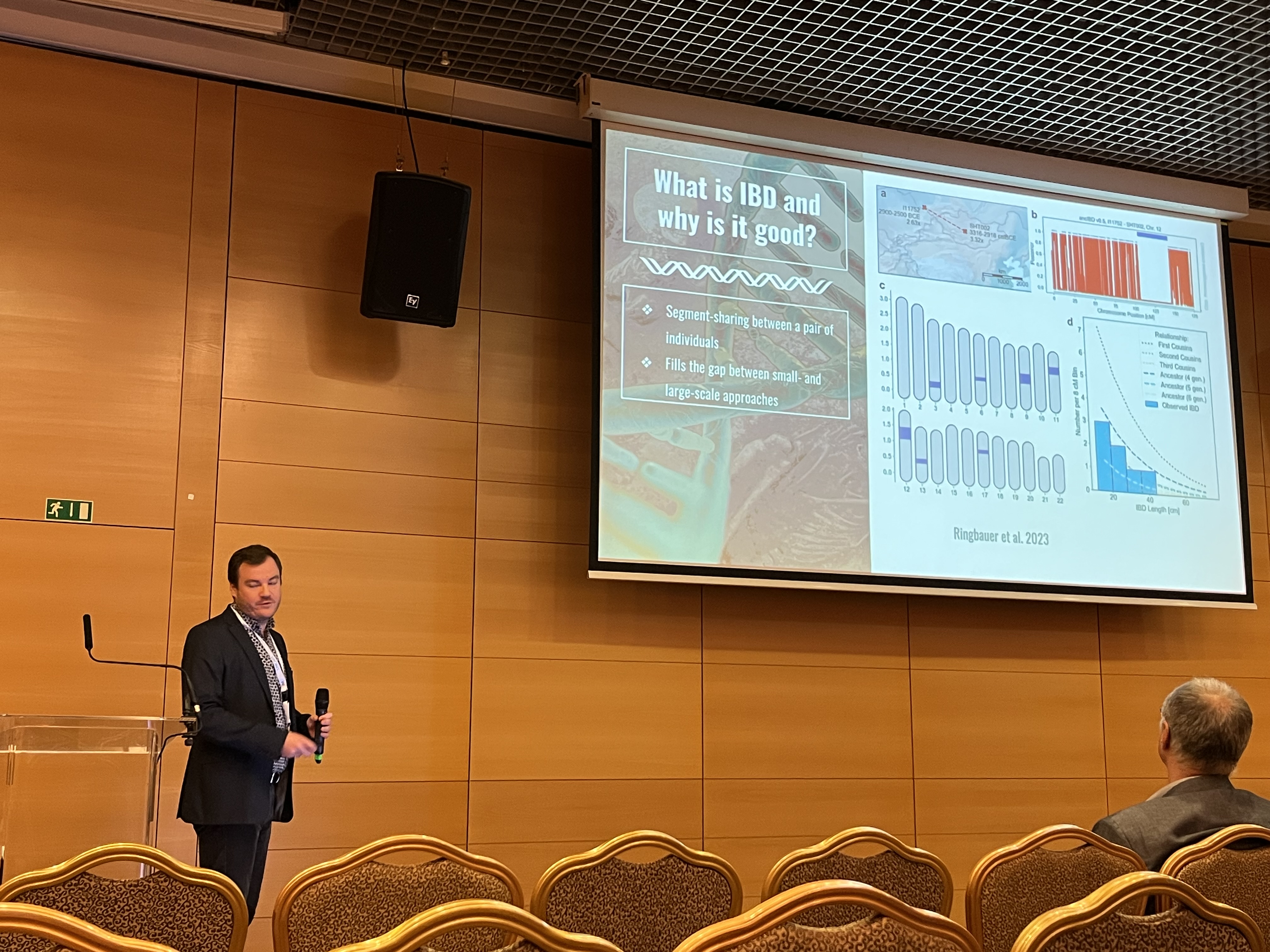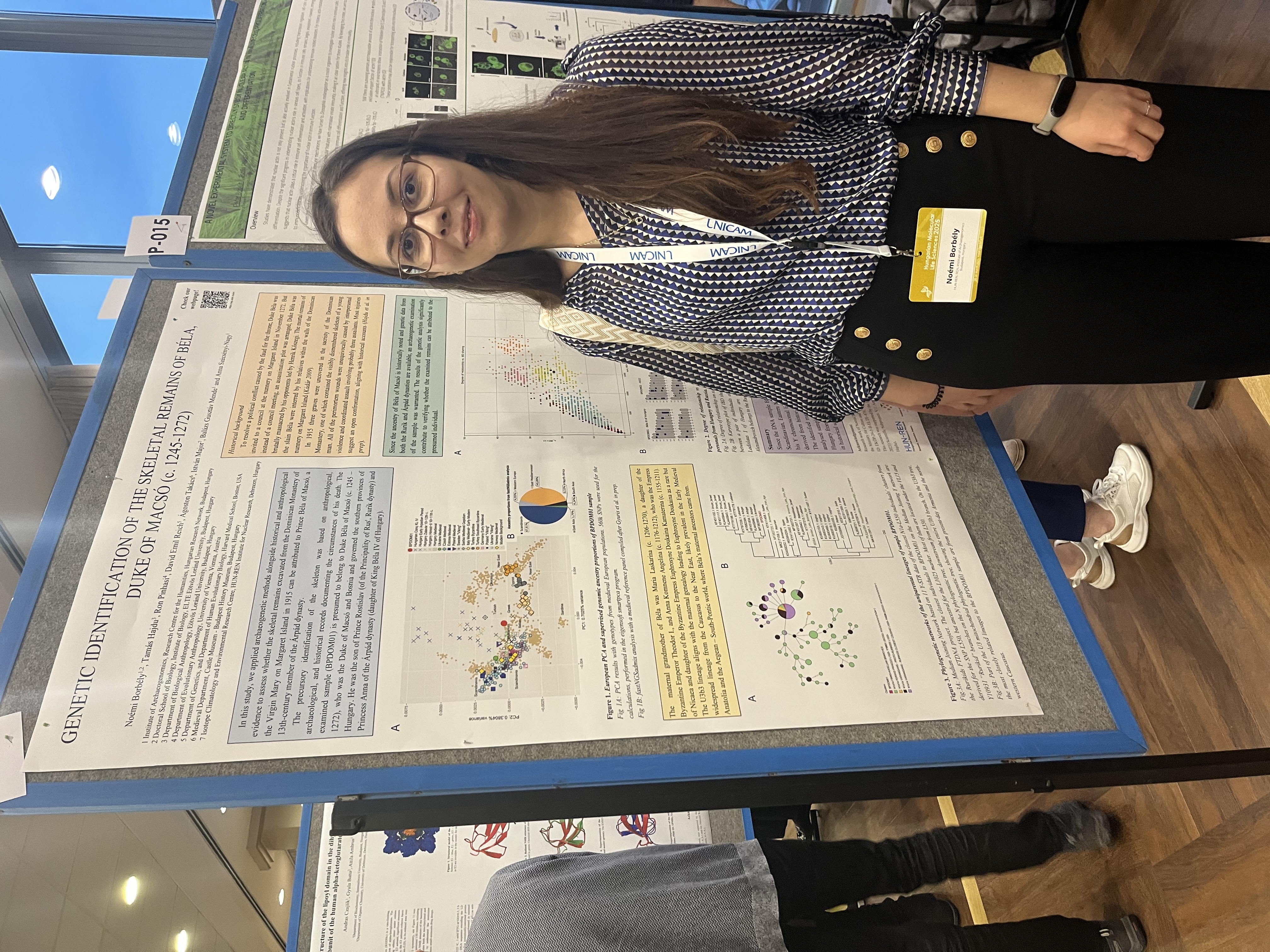Researchers from the Institute of Archaeogenomics once again participated in the Hungarian Molecular Life Sciences international conference, held in Eger from 28 to 30 March this year.
At the event, organised by the Hungarian Biochemical Society (MBKE) and the Hungarian Genetics Society (MAGE), Dániel Gerber and Noémi Borbély shared insights into the results of research projects carrier out at our institute with the attendees, representing various fields of life sciences.
In his presentation, Dániel Gerber discussed the novel bioinformatic computational methods – such as identity-by-descent (IBD) – applied in their recently published study of the 5th–11th century population of the Carpathian Basin. The list of authors and the title of his presentation are as follows:
- Dániel Gerber, Veronika Csáky, Bea Szeifert, Noémi Borbély, Kristóf Jakab, György Mező, Balázs Gusztáv Mende, Béla Miklós Szőke, Anna Szécsényi-Nagy:
Novel bioinformatic approaches reveal population transformations during the second half of the first millennium CE in the Carpathian Basin

In her poster presentation, Noémi Borbély illustrated how archaeogenetic analysis can contribute to identifying the skeletal remains of medieval historical figures, using the example of Béla, Duke of Macsó, the grandson of King Béla IV. The list of authors and the title of her poster are as follows:
- Noémi Borbély, Tamás Hajdu, Ron Pinhasi, David Emil Reich, Ágoston Takács, István Major, Balázs Gusztáv Mende, Anna Szécsényi-Nagy:
Genetic identification of the skeletal remains of Béla, Duke of Macsó (after 1243-1272)



